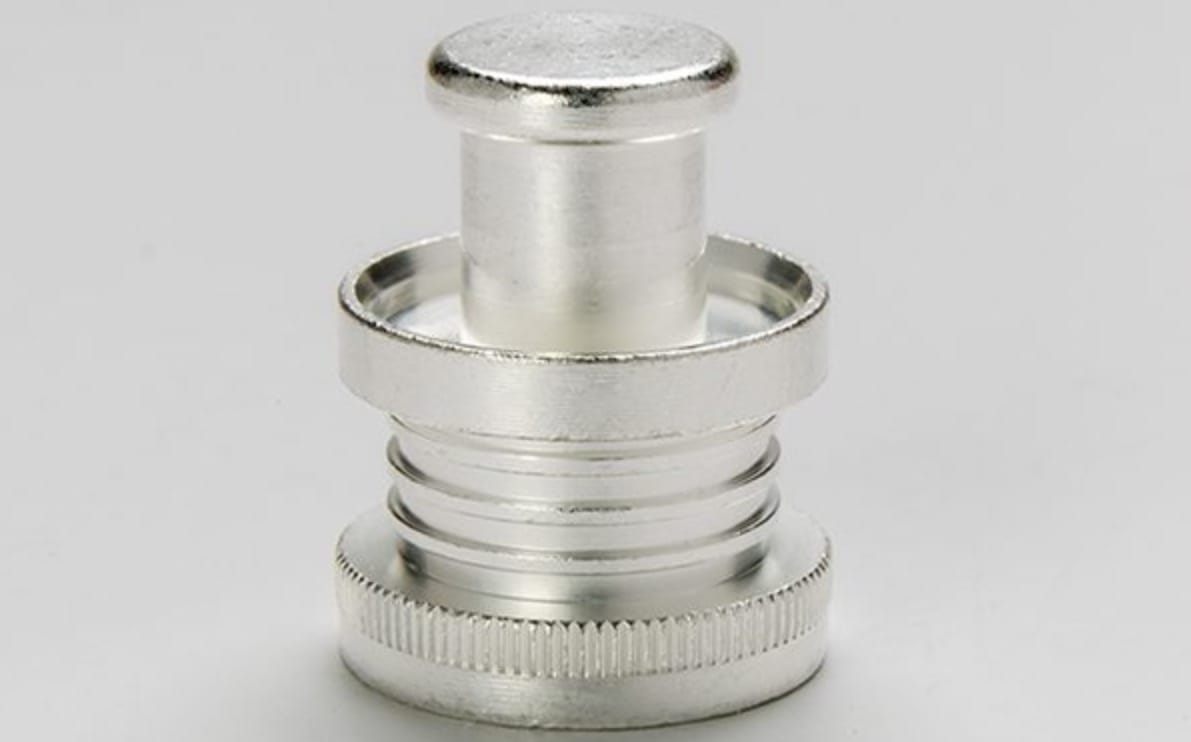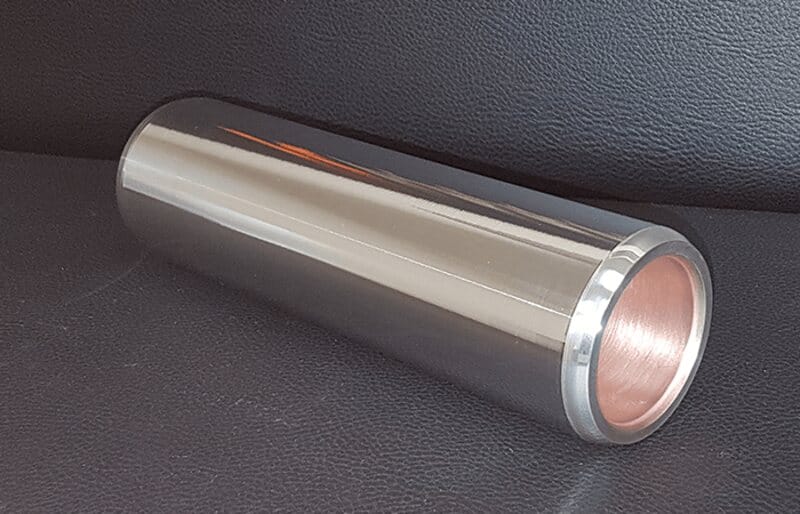Electroplating of silver over other base material surfaces is known as silver plating. Electro-plating of silver has been used since the 1840s in order to make the component resistant to corrosion and make its appearance attractive. Silver plating provides remarkable properties to the surface of components, such as enhancing soldering and electrical conductance.
Contents
Silver Plating Process
Here is a step-by-step process for silver plating:
Preparation of the Plating Bath
First, a silver plating bath is prepared using an alkaline cyanide solution. This solution usually contains silver as potassium silver cyanide (KAg(CN)₂) or thiosulfate for cyanide free processing.The ideal solution contains 30-45 g/L silver.
Setting Up the Electroplating Cell
Now, the electrochemical cell is set up for this purpose:
- The component to be plated is cleaned and connected to the power supply’s negative lead, and it acts as a cathode.
- A block of silver with a minimum 99% purity is used as the anode.
- Finally, both electrodes are immersed in the plating solution, which is maintained at 20-30°C and a current density of 1-5 A/dm².
Electroplating
After the immersion of both electrodes into the solution, a DC is applied to the cell.
This current initiates the reaction, and silver ions from the solution migrate toward the cathode and deposit into a fine metallic layer. Appropriate current density is maintained for uniform application of the silver layer.
General rack/barrel plating: use moderate current.
High-Speed Selective Plating Parameters
- Current density:8–37.7 A/dm²
- Uses platinum-based anodes and mildly alkaline, cyanide-free buffered solutions
- Typical silver concentration: 65–82 g/L
- pH range: 8.5–9.5
- Deposit thickness: ~175 µin (4.5 µm) in 1.5–5 seconds
- Additives:
Brighteners: Organic (sulfur-based) or trivalent antimony (Sb³⁺). Sb³⁺ increases hardness and electrical resistance
Grain Refiner: Selenium, effective at <5 mg/L, especially for electronic connectors,
Post-Plating Treatment
After the electroplating process is complete, the components may be subjected to some post-treatment, such as:
Tarnish Prevention:
To prevent the silver from being tarnished, a clear lacquer or electrophoretically deposited epoxy is applied to non-conductive parts.
Hydrogen Embrittlement Relief
For high-strength steels (UTS ≥ 1000 MPa) is baked 190–220 °C for 2–3 h per ASTM B850. to prevent Hydrogen embrittlement.
Soaking in Hot Water
Sometimes, the electroplated components are Immersed in water ≥90 °C for at least 2 minutes. This is done to remove cyanide residues and prevent lateral surface discoloration.

Silver Plating Methods
Silver plating can be done on surfaces using different methods. Here are the two most common methods:
Barrel Silver Plating
In this method, you can plate a large number of small parts at a time. For this purpose, the components to be plated are placed in a barrel-shaped cage, usually made from non-conductive material. This barrel is immersed in a silver ion-containing solution for plating.
Rack Plating
This method is used for plating larger or more delicate parts. In this process, the components to be plated are fastened to a rack using screws or hooks, which are conductive. The rack is then placed into the ionic silver solution, and the screws conduct the electric current needed to deposit silver onto the surface of the part.
Silver Plating Standards
Two commonly referenced standards for silver electroplating are ASTM B700 and the older MIL-QQ-S-365.
ASTM B700
This standard is used for silver plating in engineering applications. It defines specific requirements for silver purity, hardness, and post-treatment. It categorizes silver purity into three types:
- Type I with a minimum of 99.9% silver,
- Type II with at least 99.0%
- Type III with a minimum of 98.0%.
MIL-QQ-S-365
This is the older version of the silver plating standard, which ASTM B700 has replaced. However, the standard is still widely recognized and used in many industries. This standard also has three types.
- Type I for matte finishes,
- Type II for semi-bright finishes
- Type III for bright finishes.
Materials That can be Silver Plated
Here are the metals that can be silver-plated to enhance their surface properties:
- Aluminum
- Bronze
- Copper and copper alloys: Silver plating over copper and its alloys require a nickel undercoat.
- Steel and stainless steel alloys
What is Silver Plating Used for?
Silver plating is used for various purposes due to its excellent conductivity, corrosion resistance, and durability.
Electrical and Electronic Components
Silver plating is commonly applied to parts that require high thermal conductivity, such as connectors, semiconductors, bus bars, and antennas.
High-Temperature and High-Wear Applications
Silver plating is known for its strength and stability, which is why it is also used for components exposed to extreme conditions. Such components include bearings and fasteners that operate under stress.
Reflective and Conductive Surfaces
We know that silver has remarkable reflective and conductive properties, which make it suitable for systems that transfer light or energy, such as coatings on LED assemblies and electrical contacts.
Hygienic and Long-Life Components
Silver plating also adds value to components that require cleanliness, longevity, and resistance to contamination. Due to its corrosion resistance and antibacterial nature, it is suitable for medical tools and wearable medical sensors.
Decorative Finishes
In decorative applications, silver plating enhances the appearance of jewelry, silverware, trophies, and handcrafted objects.

Benefits of Silver Plating
- Silver coating is highly resistant to corrosion in corrosive environments, offering durability to the component’s surface.
- Silver is a metal that is a good conductor of electricity and heat. That’s why silver plating enhances the thermal and electrical conductance of components.
- Not only is silver plating corrosion resistant, but it also provides remarkable antibacterial properties to the component’s surface.
- Silver coating offers a fine polished finish making the components visually appealing and enhances its look.
Limitations of Silver Plating
- Silver is subjected to surface tarnish over time due to sulfide formation. As a result, silver-plated items often require additional protective treatments such as clear lacquers or specialized coatings.
- Silver deposits on certain substrates, like high strength steel, can cause hydrogen embrittlement. To avoid this, post-plating baking is required at about 190–220 °C for 2 to 3 hours.
- In cyanide plating solutions, immersion silver deposits can form on less noble metals. It causes poor adhesion for subsequent layers unless a silver strike is used.
- No doubt silver plating costs less compared to gold plating but silver plating itself costs remarkably high specially for large scale projects.
FAQ
1. Does Silver Plating Tarnish?
Yes, silver plating tarnishes over time due to surface sulfide formation, which causes discoloration.
2. How to Remove Silver Plating?
Silver plating can be removed by reverse electroplating. In this method, the component is immersed in a saltwater solution and connected to a copper cathode. Finally, current is applied, leading to dissolving from the surface.
3. What is Oxidized Silver Plating?
Oxidized silver plating, sometimes called blackened silver, darkens the silver surface through a chemical reaction, usually with sulfur compounds. It is used to create an intentionally aged or antique appearance.



